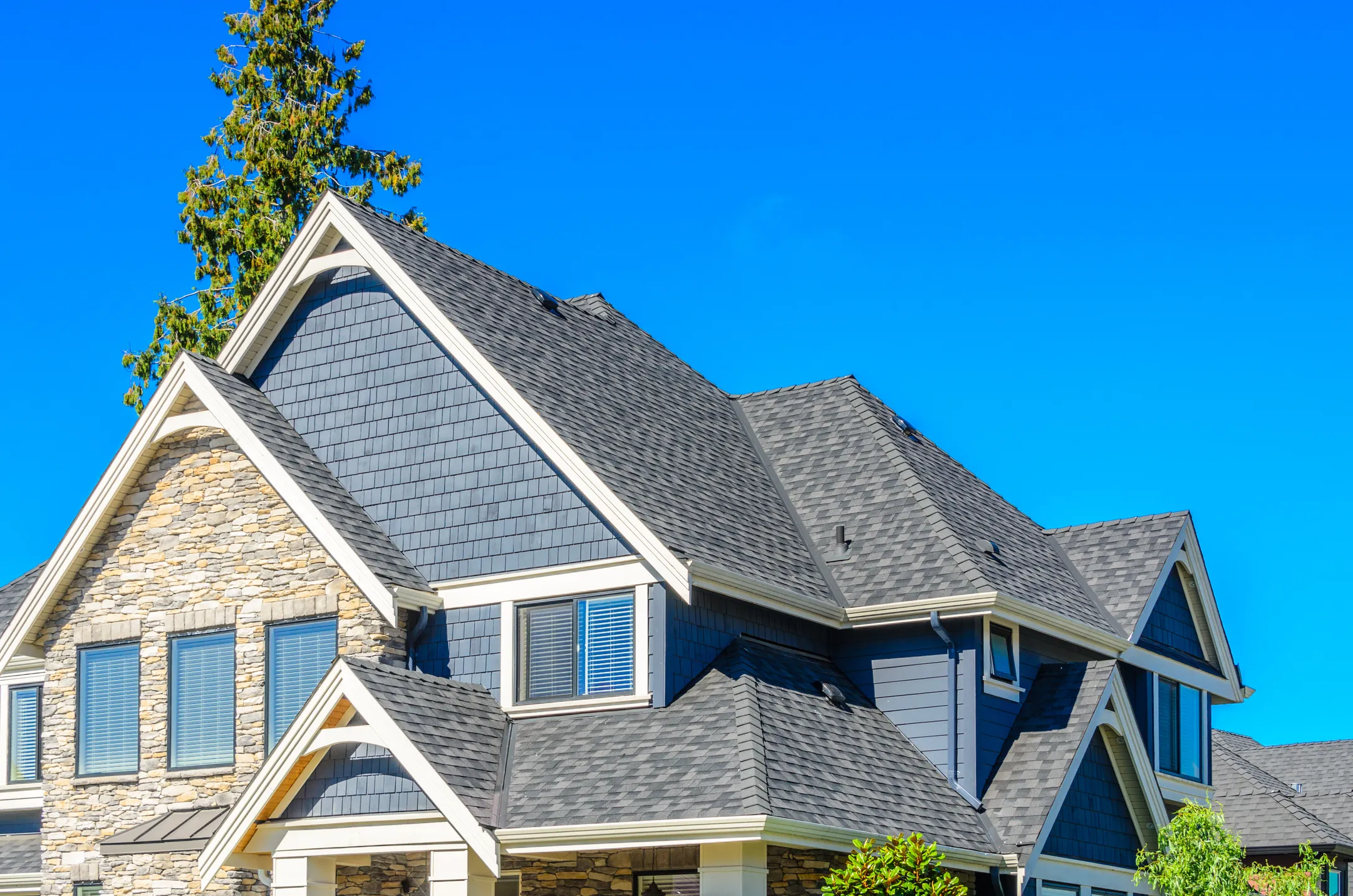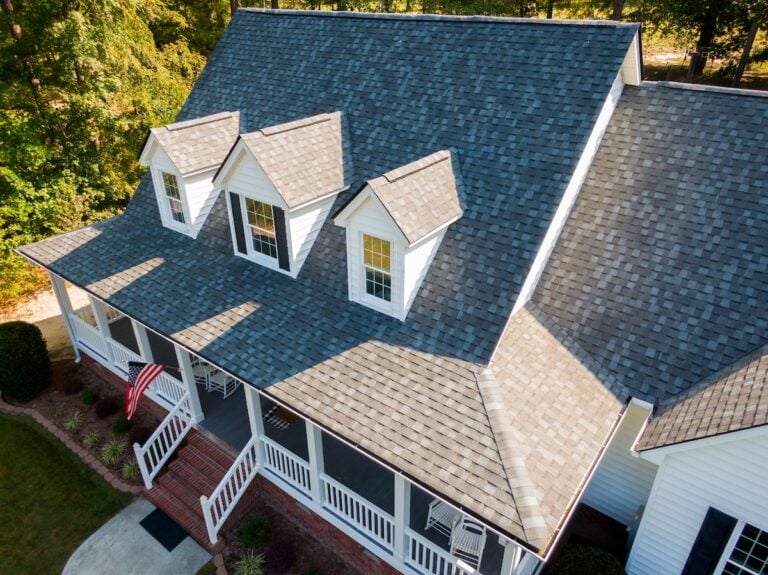Choosing the right roof for your home is a big decision. Your roof isn’t just about aesthetics; it’s also your home’s first line of defense against the elements. Whether you’re building a new house or replacing an old roof, understanding the different roof types can help you make an informed and practical choice. In this blog post, we’ll explore the various roof types available to homeowners today, including:
- Gable Roof
- Hip Roof
- Mansard Roof
- Flat Roof
- Shed Roof
- Butterfly Roof
- Gambrel Roof
- Combination Roof
- Clerestory Roof
- Bonnet Roof
- Saltbox Roof
🤔 Why Are There Different Roof Options?
The varied roof options available to homeowners reflect diverse architectural styles, regional climates, and specific functional needs. Each type of roof is designed to address unique requirements, such as:
- Water drainage
- Insulation
- Durability against weather conditions
For instance, steeply pitched roofs like gable and hip roofs are especially effective in areas prone to heavy snow, as they prevent snow accumulation. Conversely, flat roofs may appeal in warmer climates where rainfall is minimal, offering easier access for maintenance and installing rooftop features. By providing a variety of roofing options, homeowners can select a design that not only enhances their property’s aesthetic but also aligns with their local environment and personal preferences.
🏘️ 11 Roof Types To Consider For Your Home
When selecting a roof for your home, it’s important to consider various styles that can enhance both aesthetics and functionality. Here are 11 roof types to consider, each offering unique benefits and designs to suit your needs.
1. Gable Roof
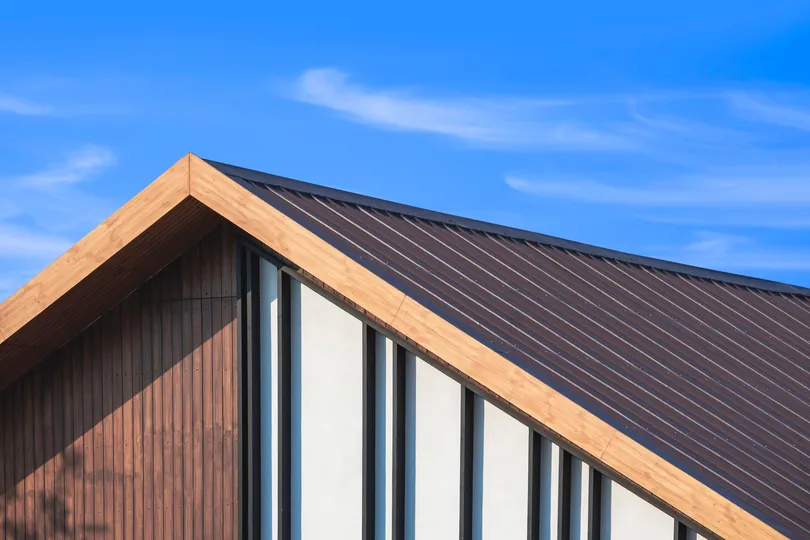
A gable roof is one of the most common roof types. With its simple design, it features two sloping sides that meet at a ridge, creating a triangular shape at the ends. This roof type is also known as a pitched or peaked roof.
Benefits of a Gable Roof
Gable roofs are popular for their excellent drainage capabilities, making them ideal for areas with heavy rainfall or snow. The steep pitch allows water and snow to slide off easily, reducing the risk of leaks and structural damage. Additionally, gable roofs provide extra attic space or vaulted ceilings, enhancing the home’s overall aesthetic.
Drawbacks of a Gable Roof
While gable roofs are generally sturdy, they can be vulnerable to high winds. Strong winds can cause the roof to lift or even detach from the home if not properly constructed and secured. Homeowners in hurricane-prone areas should consider additional reinforcements or alternative roof types.
2. Hip Roof
A hip roof features slopes on all four sides, which come together at the top to form a ridge. This design makes hip roofs more stable and durable compared to gable roofs.
Benefits of a Hip Roof
Hip roofs offer excellent stability and resistance to high winds, making them suitable for regions prone to hurricanes and strong storms. The sloping sides also provide good drainage, preventing water accumulation. Additionally, the symmetrical design of hip roofs adds a visually appealing dimension to any home.
Drawbacks of a Hip Roof
Despite their advantages, hip roofs are more complex and expensive to build. The intricate design requires more materials and labor, which can drive up construction costs. Furthermore, hip roofs offer less attic space compared to gable roofs, limiting storage or potential living space.
3. Mansard Roof
A mansard roof, also known as a French roof, features four sides with two slopes on each side. The lower slope is steeper than the upper slope, creating a unique and stylish appearance.
Benefits of a Mansard Roof
Mansard roofs provide ample living space and flexibility. The steep lower slope allows for extra attic or loft space, which can be utilized for additional rooms or storage. This roof type also adds an elegant and sophisticated look to the home, enhancing its curb appeal.
Drawbacks of a Mansard Roof
One potential drawback of a mansard roof is its cost. The intricate design and additional materials required can make it more expensive to construct. Additionally, the flat upper slope may lead to water pooling if not properly maintained, increasing the risk of leaks and damage.
4. Flat Roof
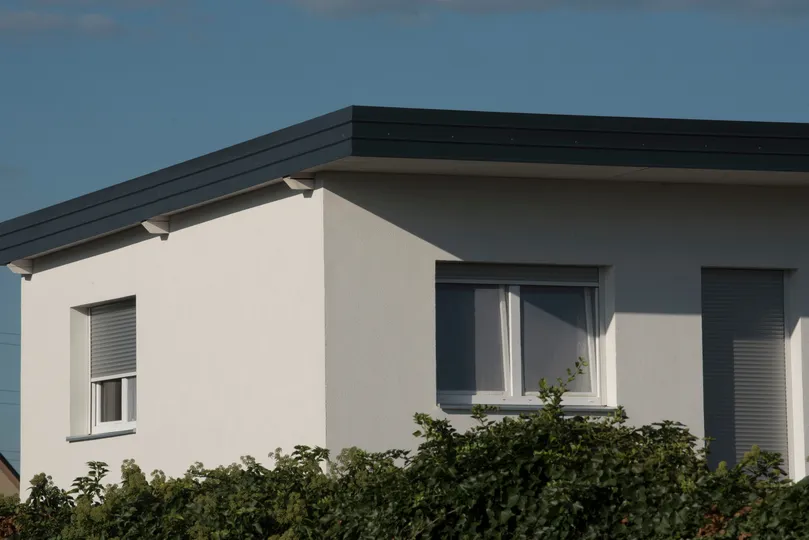
A flat roof, as the name suggests, has a nearly level surface with a slight pitch for drainage purposes. This roof type is commonly used in commercial buildings but can also be found in modern residential homes.
Benefits of a Flat Roof
Flat roofs offer a sleek and contemporary look, making them a popular choice for modern architecture. They provide additional outdoor living space, such as a rooftop garden or patio, maximizing the use of available space. Flat roofs are also easier and safer to access for maintenance and repairs.
Drawbacks of a Flat Roof
One major drawback of flat roofs is their limited drainage capabilities. The slight pitch may not be sufficient to prevent water accumulation, leading to potential leaks and structural damage. Regular maintenance is crucial to ensure proper drainage and prevent issues.
5. Shed Roof
A shed roof, also known as a skillion or lean-to roof, features a single sloping surface. This simple and minimalist design is often used for home additions or modern-style homes.
Benefits of a Shed Roof
Shed roofs are easy and cost-effective to construct due to their straightforward design. The single slope allows for efficient water runoff, reducing the risk of leaks. Additionally, shed roofs provide ample natural light and ventilation, making them ideal for homes with large windows or skylights.
Drawbacks of a Shed Roof
One potential drawback of shed roofs is the limited attic or storage space. The single slope design may not provide enough room for additional living or storage areas. Additionally, shed roofs may not be suitable for regions with heavy snowfall, as the sloping surface may not support the weight of accumulated snow.
6. Butterfly Roof
A butterfly roof features two slopes that meet in the middle, resembling the wings of a butterfly. This unique and modern design is often used in contemporary homes.
Benefits of a Butterfly Roof
Butterfly roofs offer a striking and distinctive appearance, making a bold architectural statement. The inward slopes create a central valley, which can be utilized for water collection or green roofs. This design also allows for ample natural light and ventilation, enhancing the overall energy efficiency of the home.
Drawbacks of a Butterfly Roof
One potential drawback of butterfly roofs is the complexity of construction. The unique design requires careful planning and execution, which can increase construction costs. Additionally, the central valley may be prone to water pooling if not properly maintained, leading to potential leaks and damage.
7. Gambrel Roof
A gambrel roof, also known as a barn roof, features two slopes on each side, with the lower slope steeper than the upper slope. This design is commonly used in barns and colonial-style homes.
Benefits of a Gambrel Roof
Gambrel roofs provide ample attic or loft space, making them ideal for homes with additional storage or living area needs. The steep lower slope allows for efficient water runoff, reducing the risk of leaks. Additionally, gambrel roofs offer a classic and timeless appearance, adding character to the home.
Drawbacks of a Gambrel Roof
One potential drawback of gambrel roofs is their vulnerability to high winds. The steep slopes may catch the wind, leading to potential damage or detachment during strong storms. Regular maintenance and reinforcement are essential to ensure the durability of a gambrel roof.
8. Combination Roof
A combination roof, as the name suggests, combines two or more roof types to create a unique and functional design. This versatile approach allows homeowners to customize their roof to suit their specific needs and preferences.
Benefits of a Combination Roof
Combination roofs offer the best of both worlds by incorporating the strengths of different roof types. Homeowners can enjoy improved drainage, increased living space, and enhanced aesthetics. This flexibility allows for creative and personalized designs, ensuring the roof complements the overall architecture of the home.
Drawbacks of a Combination Roof
One potential drawback of combination roofs is the complexity of construction. The integration of multiple roof types requires careful planning and execution, which can increase construction costs. Additionally, the maintenance and repair of combination roofs may be more challenging due to the varied design elements.
9. Clerestory Roof
A clerestory roof features a vertical wall with windows, known as clerestory windows, between two sloping roof sections. This design allows for ample natural light and ventilation.
Benefits of a Clerestory Roof
Clerestory roofs provide abundant natural light, reducing the need for artificial lighting and enhancing the overall energy efficiency of the home. The elevated windows also allow for excellent ventilation, promoting a healthy indoor environment. Additionally, clerestory roofs add a unique and modern architectural element to the home.
Drawbacks of a Clerestory Roof
One potential drawback of clerestory roofs is the increased construction complexity. The vertical wall with windows requires precise installation to ensure proper insulation and prevent leaks. Additionally, clerestory roofs may be more susceptible to wind damage, requiring additional reinforcement.
10. Bonnet Roof
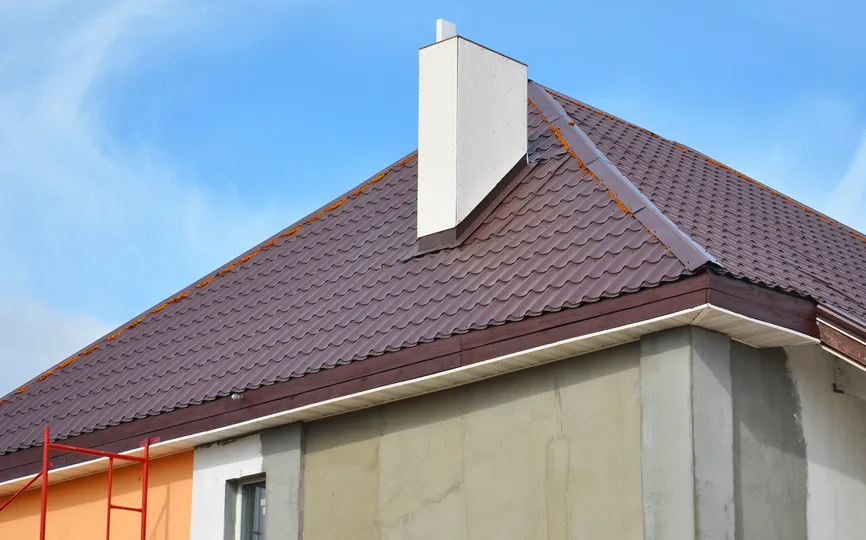
A bonnet roof, also known as a kicked-eaves roof, features a double slope with the lower slope extending beyond the walls of the home. This design creates a shaded porch or veranda area.
Benefits of a Bonnet Roof
Bonnet roofs provide excellent protection from the elements, with the extended lower slope offering additional shade and shelter. This design also enhances the aesthetic appeal of the home, creating a charming and inviting exterior. Additionally, the double slope allows for efficient water runoff, reducing the risk of leaks.
Drawbacks of a Bonnet Roof
One potential drawback of bonnet roofs is the increased construction complexity and cost. The double slope design requires precise planning and execution, which can drive up construction expenses. Additionally, the extended lower slope may require additional support to ensure stability and durability.
11. Saltbox Roof
A saltbox roof features an asymmetrical design with one long, sloping side and one shorter, steep side. This design is commonly used in colonial-style homes.
Benefits of a Saltbox Roof
Saltbox roofs offer increased living space with their unique design, providing additional headroom and storage capacity. The steep slope ensures efficient water runoff, reducing the risk of leaks and structural damage. Additionally, saltbox roofs add a distinctive and charming architectural element to the home.
Drawbacks of a Saltbox Roof
One potential drawback of saltbox roofs is the complexity of construction. The asymmetrical design requires careful planning and execution, which can increase construction costs. Additionally, saltbox roofs may have limited attic space on the shorter side, potentially reducing storage capacity.
🙌 Elevate Your Home with Expert Roofing Solutions from Best Exteriors
Choosing the right roof type is crucial for the longevity and performance of your home. At Best Exteriors, we are committed to providing top-notch roofing solutions tailored to your needs. Our team of experienced professionals will guide you through the entire process, from selecting the best roof type to installation and maintenance. With our expertise and dedication to customer satisfaction, you can trust us to deliver exceptional results.
Ready to enhance your home’s protection and curb appeal with the perfect roof? Contact Best Exteriors today to get started!
